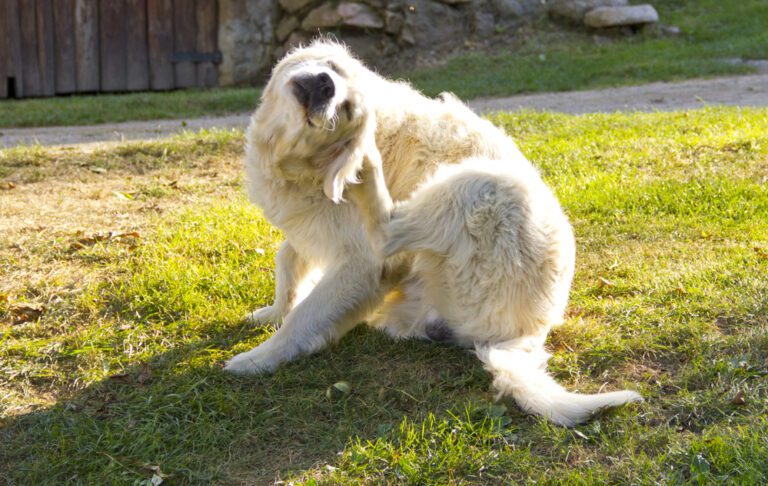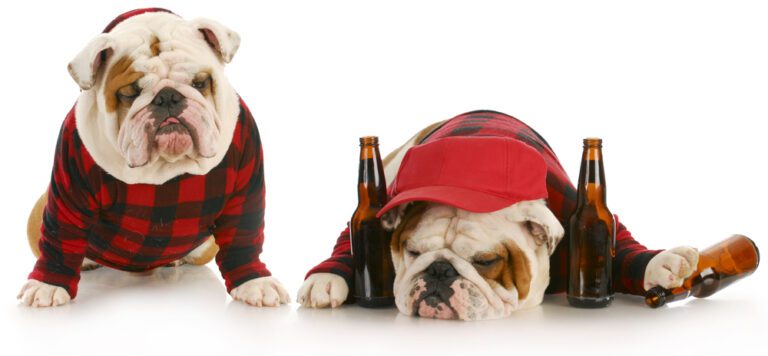How to Correct A Dog’s Bad Behavior
Did you know that approximately 94% of dog owners do at least a little training at home? Having a well-behaved dog not only makes you happier, but it also provides your dog with the structure it needs to feel safe and comfortable at home. Thus it’s important that you learn how to correct a dog’s bad behavior if you noticed that it’s exhibiting some.
But what do you do if you find that your dog exhibits signs of bad behavior?
When owners look to correct bad dog behavior, they often find that the issues are simple and fixable. Unless the dog has experienced some sort of deep trauma, most issues can be resolved quickly with proper training. Even if there is trauma present, a little love and a lot of patience goes a long way in helping your dog be its best self.
Whether you need to know how to correct bad dog behavior because your furry friend has started acting out, or you’re just curious as to how to prevent bad dog behavior to begin with, we’ve got some answers for you.
Why Dogs Need Strict Rules
Let’s start with the basics. Dogs need strict rules just like children. Now, this doesn’t mean that you need to be strict with your dog, speak firmly with him, or even treat him in a different way. It simply means that dogs behave better when they know their boundaries and the rules of the house, so it’s vital that you learn how to correct your dog’s bad behavior right from the start.
This is important because it requires clear, consistent communication on your behalf, especially if you bring the dog home as a puppy. You should communicate boundaries clearly and very consistently, not just when it’s convenient. And, this can get tiring, but the earlier you do it, the easier it will be in the long run.
What does this look like? Let’s look at an example…
If you want to train your dog to stop begging at the table when everybody is eating, for example, don’t allow the behavior sometimes and then reprimand them at other times. Be consistent with your discipline and they’ll learn faster.
Always let your dog know that you’re in charge. Eventually, they’ll trust you and obey you when you ask them to do or not do something.
It’s important to remember not to get frustrated. A representative from VCA Hospitals said once that, “To have a well-trained dog, you need to be committed to reinforcing the training tasks on nearly a daily basis for the first year of your puppy’s life.”
Basic Obedience Training: Is It Worth It?
If you find that you’re not great at training your pup, you might feel that basic obedience training isn’t worth it. Stop right there! It’s totally worth it. It lays the foundation for other training that might become necessary if you need to correct bad dog behavior down the road.
Basic obedience training involves a few key commands that every dog should know. At around seven to eight weeks, most puppies are able to understand and learn what “sit” and “stay” mean. When they reach about six months of age, they’re able to participate in full obedience training where they’ll learn more advanced commands such as “heel,” “off,” and “come.”
The point, however, of basic obedience training is to socialize your puppy with other young dogs (or socialize your adult dog with other dogs that are similar in size) and to help them adjust to a space in which they’re required to listen, learn, and respond. Simply being in that environment is beneficial, whether it takes them a while to respond to certain commands or not.


The Most Common Dog Behavior Problems
So, you know that dogs require strict rules and boundaries, and that they are able to benefit greatly from basic obedience training starting from a very young age. But what if you aren’t sure whether or not your dog’s behavior constitutes as bad behavior? I mean how to correct my dog’s bad behavior if I don’t even know what is considered as bad, right?
There are a few common problems you’ll want to look out for.
Keep in mind, however, that these obedience issues are typically for adult dogs six months and older. Younger puppies are prone to chewing, biting, and rough play, but they usually grow out of it as they mature and engage in obedience training with their owners. If your dog continues to exhibit these types of behaviors, however, there might be a problem that you need to address.
Instinctive Behaviors: Chewing, Digging, Etc.
Dogs are animals, after all, which means that they’ll behave instinctually unless taught otherwise. In this case, instinctive behaviors include chewing, digging, and chasing (the last is even more common in certain breeds such as herd dogs).
These are natural dog behaviors that you shouldn’t worry about unless it becomes a problem. Occasional digging is acceptable and chewing on furniture might be forgivable as long as they grow out of those stages after they mature and experience basic training. For these types of problems, it’s somewhat unfeasible that you can expect that these instinctive behaviors will stop completely, but proper training can help minimize them.
Separation Anxiety
Issues such as separation anxiety are more related to trauma or health concerns. If your puppy wasn’t socialized properly and spent too much time surrounded by people, it never had the chance to learn how to be alone. This can be one cause of separation anxiety in dogs, along with a number of other health issues.
If your dog is exhibiting bad behavior such as chewing furniture while it’s alone in the house, destroying toys, barking excessively, and urinating indoors, it could be more of a sign of separation anxiety than mere bad behavior. In this case, it’s best to take your dog to the vet to have them checked out.


Aggression
One of the most dangerous behaviors in dogs is aggression. While other instinctive behaviors qualify as “bad,” aggression is the main one that can be harmful to you, other people, and other dogs.
With dogs, there is an aggression ladder that is helpful to understand. This ladder progresses from simply yawning and blinking all the way to biting, which is unacceptable for any dog. It’s important to understand what’s considered aggressive for your dog and to look for the signs of aggression in dogs (such as standing crouched, having their tail between their legs, growling, and snapping) so that you’re able to identify what’s causing the issue.
How to Stop Bad Dog Behavior
There are ways to correct a dog’s bad behavior but first, we have to identify what is the issue. Different methods can be used to address different behavioral problems.
How to Prevent Inappropriate Chewing in Dogs
If you adopt your dog as a puppy, it’s important to teach him what is appropriate to chew and what isn’t. Furthermore, chewing can be a sign of anxiety, stress, or boredom.
It’s important here to help them distinguish between what’s okay to chew and what’s not. When they’re learning, don’t leave anything out that you don’t want to be chewed; it’s the fastest way to ensure they never develop a tendency to chew on shoes or books, for example.
Then, ensure they have the right chew toys. Whenever they begin to chew on something that’s forbidden, avert their attention and replace the object with their chew toy. Or, avert their attention entirely and take them out to play. Mental and physical exercise ensures they’re not bored or stressed and don’t look for things around the house to chew.
Ways to Prevent Separation Anxiety in Dogs
How to cure separation anxiety in dogs is one of the most common questions that dog owners tend to have about correcting a dog’s bad behavior. If your dog experiences separation anxiety, it’s crucial that you don’t make a big deal out of entrances and exits. Ignore your dog for a few minutes whenever you arrive and allow them to calm down if they’re overstimulated.
When you leave the house, do so without much fanfare. Don’t make a big deal and give them hugs, kisses, and lots of attention before leaving. Instead, practice leaving like normal. Get out the door with your keys, stay outside for a few minutes, and then come back in. This will help teach them that they’re okay; you always return.
It’s also helpful to leave an anxiety-ridden dog with clothes that smell like you. If they’re well-trained enough to understand basic communication, you might even establish a word that they understand that lets them know you’re leaving but that you’ll be back in a bit.
How to Correct Aggressive Behavior in Dogs
Correcting aggressive behavior in dogs depends on the type of aggressive behavior that they exhibit. If they growl at strangers, you might need to introduce them slowly to friends and family members from a distance until they feel comfortable with strangers on the street. However, if their issue is with other dogs, you might need to look for the underlying cause.
More often than not, there’s an underlying cause to the aggression that needs to be addressed. If your dog has suddenly started becoming aggressive, take them to the vet to ensure that there aren’t any health issues that are causing them to act out.
How to Correct Other Bad Dog Behavior
Correcting other bad dog behavior such as digging, jumping, and begging mostly require that you give your dog the proper attention and exercise it needs to get its energy out. Play with them using active toys such as balls and frisbees, and leave toys out in the yard for them so that they’ve got things to entertain themselves with.
Learning how to correct your dog’s bad behavior is important so that they do not become a nuisance in your neighborhood or become the stumbling block to your cordial relationship with your neighbor. It is possible to enjoy your dog’s company without adding on stress for you and others living near you.
Final Thoughts
Most of the time, bad behavior comes down to boredom and a lack of training, so exercising your pup mentally and physically, spending time with them, and working to train them are the most effective ways to curb standard bad dog behavior.
We hope you’ve learned how to correct a dog’s bad behavior and would start to do so as early as possible. Bad behaviors need to be curbed from the first day your furkid enters your house. Do not think that your puppy is still young, so you should allow for some misbehaviors. That’s the biggest mistake any dog owners can make!
Your pup needs to learn from day one. Keep in mind that setting ground rules is very important. It does not matter if you have a puppy or an adult dog, they need to learn what’s acceptable right from the start. What’s vital is that you exercise lots of patience and give them tons of love!







